You already understand, as a digital specialist or owner of a website, the value of web traffic. Still, online traffic varies. Actually, to better grasp your site visitors, you should be aware of five different kinds of web traffic.
The several forms of web traffic will be discussed in this post together with their effects on usability (UX) of your website. We will offer ideas and samples to assist you maximize your website for best results from direct traffic to referral traffic and all points in between.
Let us first, then, discuss the value of site usability and design in drawing in and keeping visitors. Improving the usability and appearance of your website is an ongoing activity throughout website development and SEO even with non-targeted visitors arriving to it. Furthermore, reaching your ultimate aim—more sales—dependent on micro and macro conversions (CR) and user behavior requires analysis.
Ready to explore the realm of web traffic? Let’s begin.
Exploring Different Types of Web Traffic for Business Success
Any effective internet company depends mostly on increased website traffic. A consistent and increasing traffic count for a website guarantees that a company wins the market, develops successfully, and leaves rivals well behind.
Let us first define what “traffic” is since perhaps some of our readers are not familiar with certain particular word. To put a long narrative short, traffic to the website comes from Google Search, Facebook, other social media, mailings, etc., visitors from many sources. As so, our post will cover several forms of website traffic.
Between possible clients and companies, a website serves as a point of interaction. Visitors of the page purchase certain goods and services. You will therefore boost profit if you can find a means to raise web traffic volume.
Metaphologically speaking, the website is more dead than alive with no visitors regardless of how carefully considered and aesthetically pleasing it is. Increasing site traffic on commercial subjects could be a major difficulty even for experts in online marketing. Those that have to worry about growing their companies instead of concentrating on internet marketing can fail completely.
Knowing the kinds of traffic and channels that draw visitors helps you create a plan and organizes a campaign. The best marketing plans integrate numerous approaches of drawing clients.
Website Traffic Definition
Data on website traffic indicates the number of users of a given website. Measuring in website views (sessions), it represents website reach. The website audience geography, channels, popularity of the website, and other important information about your web resource assist one to grasp their relevance.
Domain traffic statistics can help you measure company development, improve your marketing, and compare online traffic for competitor study.
How to Check Monthly Traffic on a Website
See the video for directions:
Knowing your website traffic is more critical than ever since the digital world gets more competitive. High traffic on a website helps you study user behavior, boosts your online profile, and raises your possibility of sales and leads. Finding the correct instruments to monitor and examine your traffic, however, may take time and work.
Two effective traffic tracking tools—Plerdy and Google Analytics 4—will be walked over in this post. Plerdy’s heatmap tool lets you quickly observe user clicks, scroll distance, and most interesting areas of your website. Additionally, the traffic acquisition report from GA4 allows you to monitor where your visitors find your website.
Choose a time range for study and analyze website interaction information to apply Plerdy’s heatmap. To find out where users click and how they engage with your website, then, see the heatmap. To guide user behavior and enable wise judgments, Plerdy’s heatmap additionally shows mouse movement reports and scroll depth.
The traffic acquisition report of Google Analytics 4 reveals the most recent source or media before a session, therefore guiding your knowledge of user finding of your website. You can also track UTM links in GA4 to create custom URLs and compile more particular campaign data.
Plerdy and GA4 will help you to better your online presence and keep ahead of the competition by understanding your website traffic and guiding you in action.
10 Tips to Increase Website Traffic
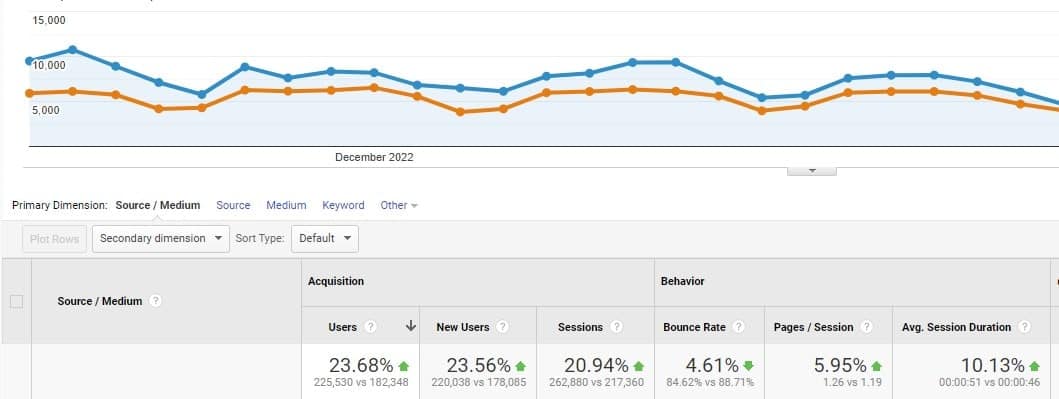
For website digital marketers, increasing website traffic presents continuous difficulty. You can employ a lot of strategies to boost website traffic. Ten suggestions here will assist increase the visitors to your website:
- Search keywords and apply pertinent ones in your titles, meta descriptions, and page content.
- Create original, every green, educational, and interesting material worth for your target market.
- Post your website materials on Facebook, Instagram, and Twitter to boost brand interactions.
- To generate quality traffic to your website, create a focused email list and distribute frequent newsletters or promotional emails.
- Create guest posts on pertinent websites to draw fresh visitors and boost backlinks to your own site.
- To raise awareness of your offer, run focused advertising on sites including Google advertising (based on keywords) and Facebook Ads (based on audiences).
- To raise brand awareness and promote website traffic, team with pertinent industry influencers.
- Use internal links to point visitors to other pertinent pages on your website, hence boosting interaction.
- Create and distribute interesting material including photos, infographics, and videos (YouTube) to raise interaction and traffic.
- Track your website traffic and find areas needing work using Google Analytics 4 or Plerdy.
Following these suggestions would help website owners boost interaction with their target market and more traffic.
What is The Impact of Traffic Type on Website User Behavior?
Illustrations illustrating how pathways of online traffic affect user behavior:
- Direct traffic: If consumers are more familiar with the aspects of a page, they could be more prone to interact with the products on a website. Greater conversion rates (CR) can follow from this kind of traffic.
- Referral traffic: Users that visit a website via a referral source—such as a blog (Forbes, CNN, BBC, etc.—may be interested in the particular material that drew them to the page. These users might spend more time browsing pertinent material.
- Organic traffic: Users that come upon a website via Google could search for certain information or answers via organic traffic. Should they come across irrelevant material or message (H1) on the initial screen, these users could exit the website faster.
- Social media traffic: Visitors that search a website from social media—Facebook, YouTube, Instagram, and so on—may be intrigued in a given offer or campaign. If the website is not a spontaneous buy or they need more time to consider, these users might thus likewise be more inclined to depart.
Understanding the influence of every traffic channel on user behavior helps website owners to evaluate data from GA4 and Plerdy tools in order to maximize website usability and raise conversion rates (CR.). Furthermore, click data segmentation by traffic channels can offer more in-depth understanding of user behavior and enable website owners to make data-driven decisions aiming at increasing sales.
5 Main Types of Web Traffic
Every channel is similarly crucial since they could influence company growth in extra good ways. You can purchase SEO traffic, employ web traffic software to increase natural reach, and guarantee the maximum amount of visits to a website from many sources by other ways.
The following are the primary strategies for increasing your online traffic and obtaining more website hits.
Organic Traffic
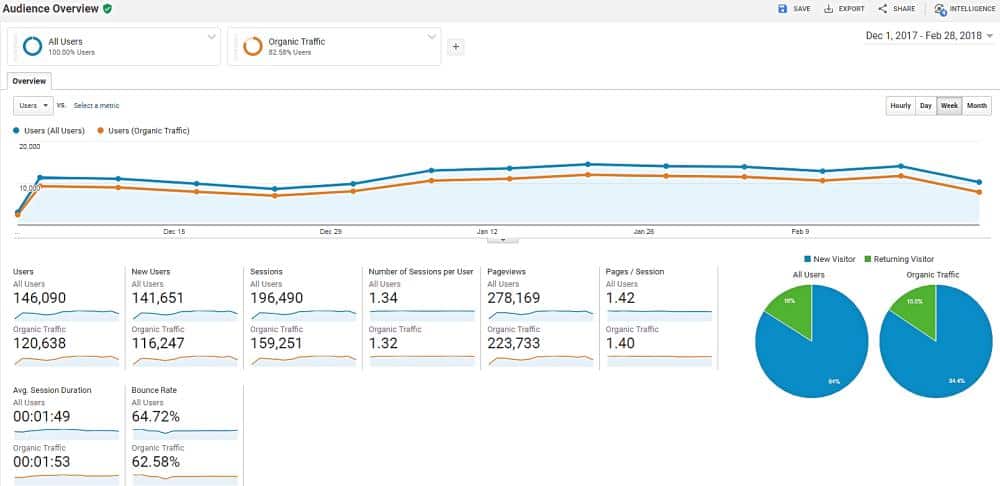
These folks came upon your website using a certain search engine query. For instance, a user might search “leather cases for iPhone,” find the webpage of an online retailer in the results list and click to access the page. Although Google Search is the most often used search engine worldwide, some areas have individuals using other ones really widely.
Case studies by Plerdy show that organic traffic can significantly expand your company. Your return will be higher the more effort you spend in drawing guests. The outcomes will not arrive quickly, of course, but they can have exponential character.
The way the website ranks in search engines for certain keywords determines the quantity of visitors derived from Google searches. Consequently, you have to undertake search engine optimization of different pages and the entire website to increase its exposure for target inquiries. You should so often focus on outside elements affecting web traffic rankings.
Organic traffic growth depends on search results showing of a website. Research keywords, enhance current pages and generate new ones, add excellent and original content, link other websites and social media users to its pages to increase website traffic. Though it takes time, this relentless effort is totally repaid.
Search engine optimization is a full-fledged study with challenging chores. These chores guarantee more website compliance with search engine quality requirements. See professionals if you want success. You will save time and prevent perhaps bad outcomes.
Consult our “30 DIY Ways to Promote Site” page to maximize your own website.
Paid Web Traffic
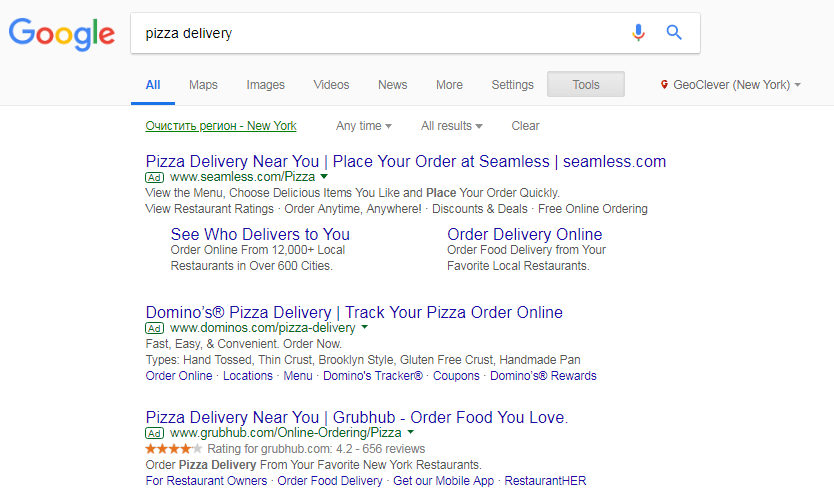
You can hire a specialist or use web traffic services to buy web traffic that converts. This kind of website traffic is called paid and includes visitors that come to the website from online ads. For example, Google Ads, ads on Facebook, display advertising, and other similar channels. Google Ads, a contextual advertising network, is one of the world’s main paid website traffic providers.
The main advantage of attracting visitors through paid traffic is that you can fully control flow by various parameters. For example, decide how many conversions the website gets and when to use geographic and other types of targeting.
A disadvantage is the need to pay for conversions and displays. For websites working on commercial topics, driving traffic is expensive. And when you run out of money, conversions to the website (and customers) will also disappear.
In Facebook news feed:

And during video playback on YouTube:
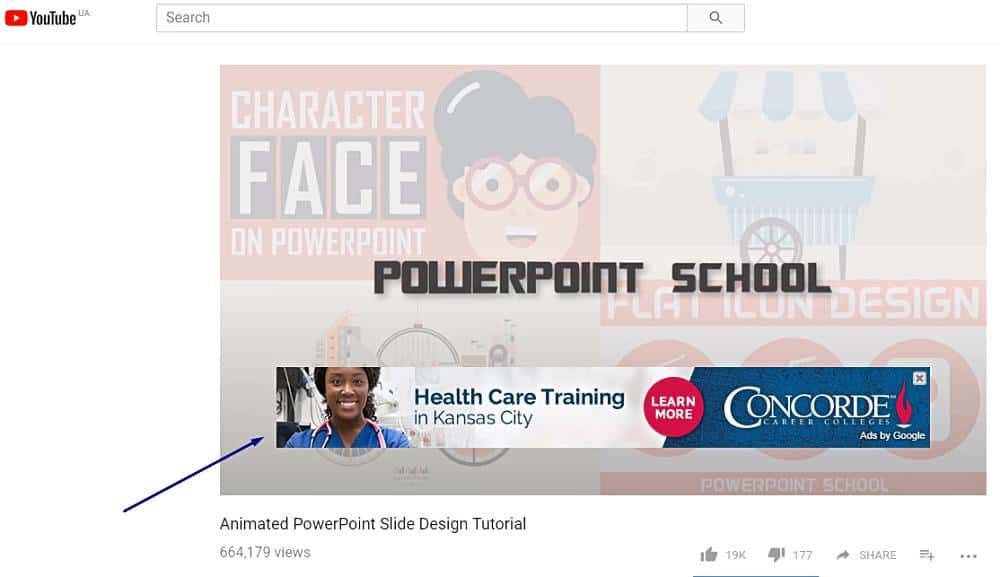
Advertisers’ ads can be displayed in different formats, placed in search, various areas of pages, text, and other types of content.
Direct Web Traffic
Direct traffic is when a user types your website URL in a browser’s address bar and clicks on a previously saved bookmark.

Direct traffic can comprise a relatively small part of the total conversions, but it is extremely important. It is an indicator of users’ loyalty and brand awareness.
The main share of such conversions for informational projects consists of returning readers. For example, customers return to view arrivals in a catalog and make a repeat purchase.

You must be more active in online and offline marketing to drive direct traffic. For example, use display ads for brand promotion, organize special offers and contests, and print and distribute flyers or brochures.
Referral Web Traffic
Referral traffic mainly comprises people who visit the website through different links on other resources (including crowd marketing). So, for example, if you publish a press release with a link to a website on a third-party resource, and somebody clicks on it and comes to the page, this will be a referral conversion. In Google Analytics 4, you see such conversions in Reports > Acquisition > Traffic acquisition.
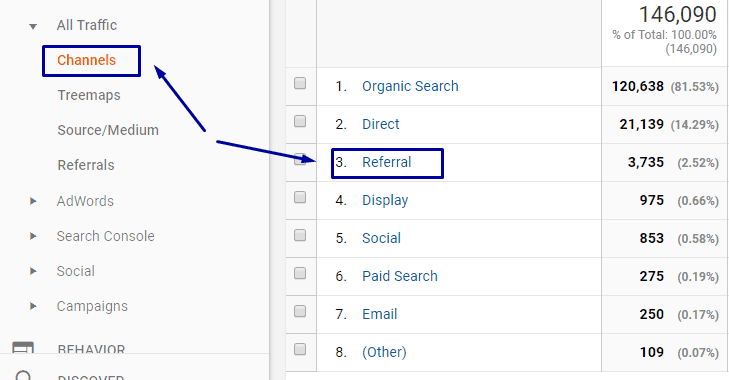
You can add backlinks in articles and comments, thematic discussions, active users’ signatures, emails, forums, etc. Yet they must be relevant. For example, The readers of a culinary website will likely need to pay attention to the link to a page about construction.
Backlinks are originally the foundation of the Internet, and users will trust companies often mentioned on reputable websites. The impact of backlinks is similar to reviews in online stores we discussed.
When you try to increase the number of backlinks to a website, ensure you benefit the page instead of accidentally harming it. You may get punishment by search engines for attempts to manipulate search results. That’s why you’d better contact SEO professionals.
Social Web Traffic
By creating a strong community with highly involved and active subscribers, you can get a “piece of the traffic pie” from platforms with millions of users. This is a challenging task, and you will likely have to use the assistance of third-party contractors.
When you start implementing a marketing strategy and actively work with social networks, you will soon notice that some social platforms bring more traffic than others. Go to Google Analytics 4, Reports > Acquisition > Traffic acquisition to check information.

When you get to the web traffic assessment, reorganizing your marketing strategy based on reliable website data is a reasonable solution. Redistribute efforts and budget towards the social networks that bring you the most traffic.
What kind of traffic do you primarily promote?
When promoting website traffic, it’s important to understand the different types of funnels. Any traffic channel should be divided into BOFU (bottom of the funnel), TOFU (top of the funnel), and MOFU (middle of the funnel). The type of funnel you target depends on your niche and the type of business you run.
If you’re starting, a good place to begin is with Google Ads. It allows you to search for potential clients based on specific keywords. However, promoting on social media platforms like Facebook, Instagram, or TikTok can also be effective, particularly if you have a product you can easily promote visually.
By understanding your audience and focusing your promotion efforts on the appropriate funnel, you can increase website traffic and attract the right kind of customers.
Note These Several Recommendations
Understanding the peculiarities of a certain type of traffic helps develop a marketing strategy for business promotion online. However, we cannot say that only one traffic source can become a single and best channel to attract customers.
Potential buyers can come to websites from an absolute variety of places. By increasing multiple kinds of traffic, you can cover a broader audience.
Here’s how assisted conversions in Google Analytics UA look like:

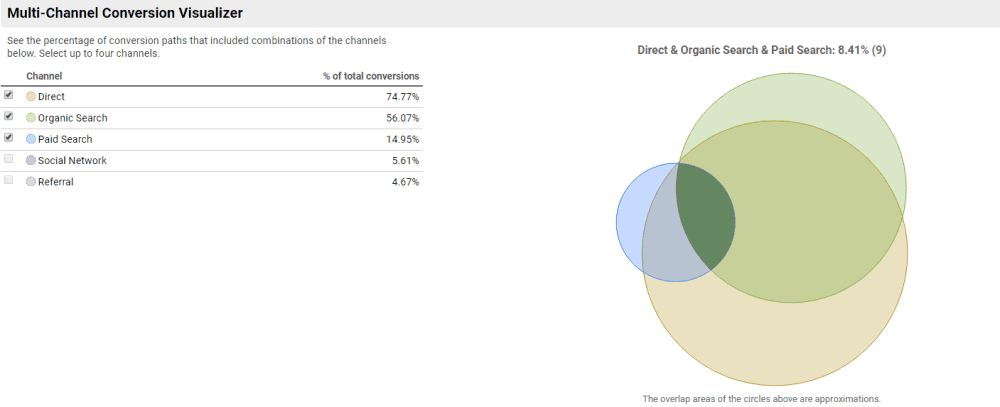
We deal with two main types of traffic: traffic management and the one which completely depends on a third party. So a logical conclusion is that you should focus on what you control and discard everything else.
That approach will be only partially correct. The best option is to work with traffic strategically. SEO – the increase of uncontrolled but free website traffic – will be the best strategic choice. Paid traffic should still be a great tool to attract visitors.
Bottom Line
Regarding web traffic, there are five types to distinguish: SEM, inbound, referral, social, and direct. Knowing these types can help you give your website the best possible chance to succeed.
Inbound traffic can increase ROI, as it naturally attracts potential customers. In addition, utilizing landing pages and optimizing your website for search engines can greatly improve your SEM traffic rate.
PPC campaigns can bring quick traffic but come with a cost. Referral traffic can come from building relationships with other companies and sharing links.
Social traffic is great for branding and building a HubSpot, but it can also be costly if you are not careful. Finally, direct traffic comes from people who know your website already.
You should use the right website versions to maximize your web traffic and have a strong CTA on each page. Most of your traffic will come from inbound and referral sources, so it’s important to focus on building those. Plerdy is a great tool to help you analyze your website’s performance and improve your CTA. Happy optimizing!
